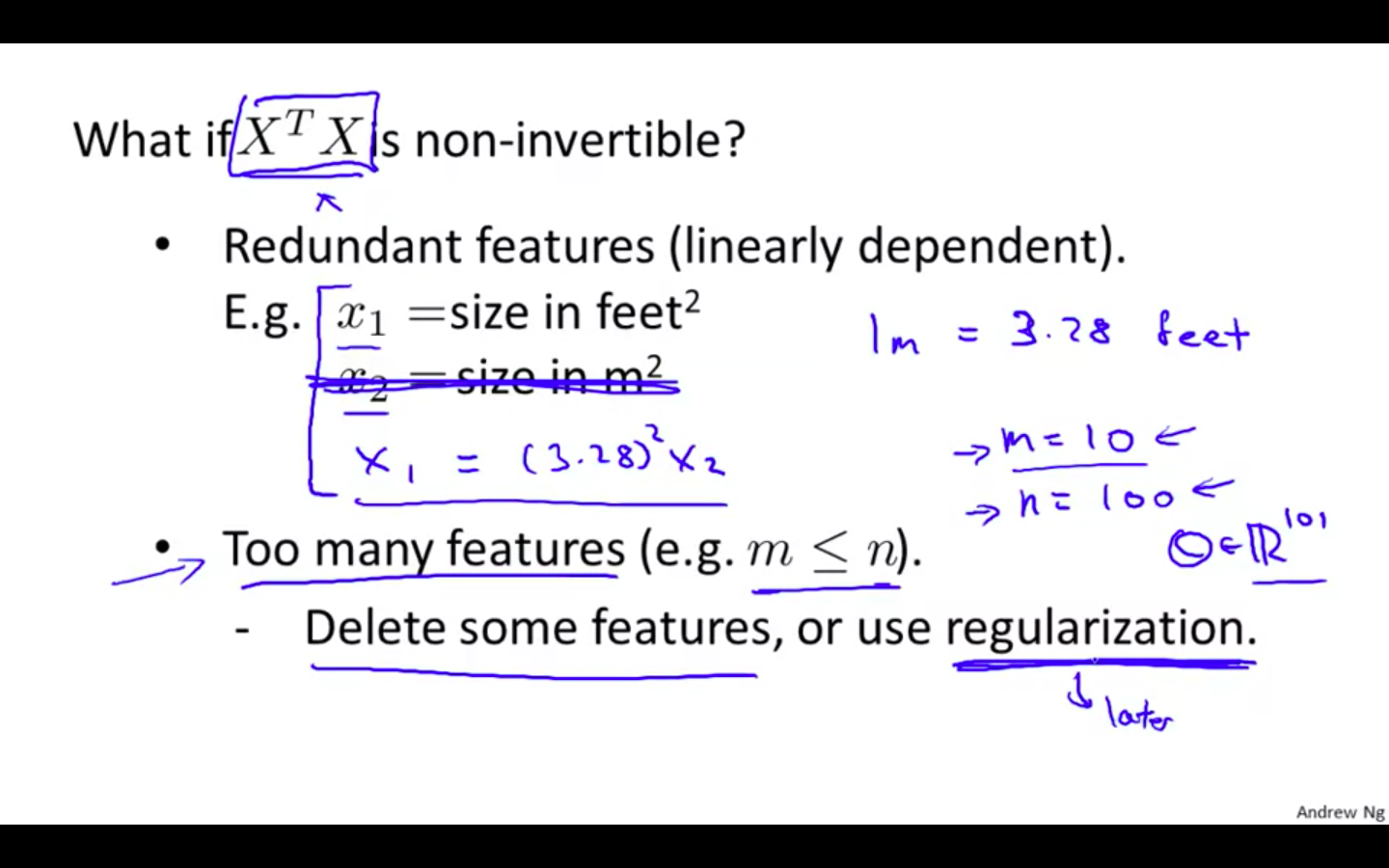Machine Learning By Andew Ng - Week 2
Multivariate Linear Regression
Multiple Features
-
Linear regression with multiple variables is also known as “multivariate linear regression”.
-
There can be ‘n’ number of features.
- For the example of predicting the price of a house, features can be no. of bedrooms, no. of floors, age of home, size.
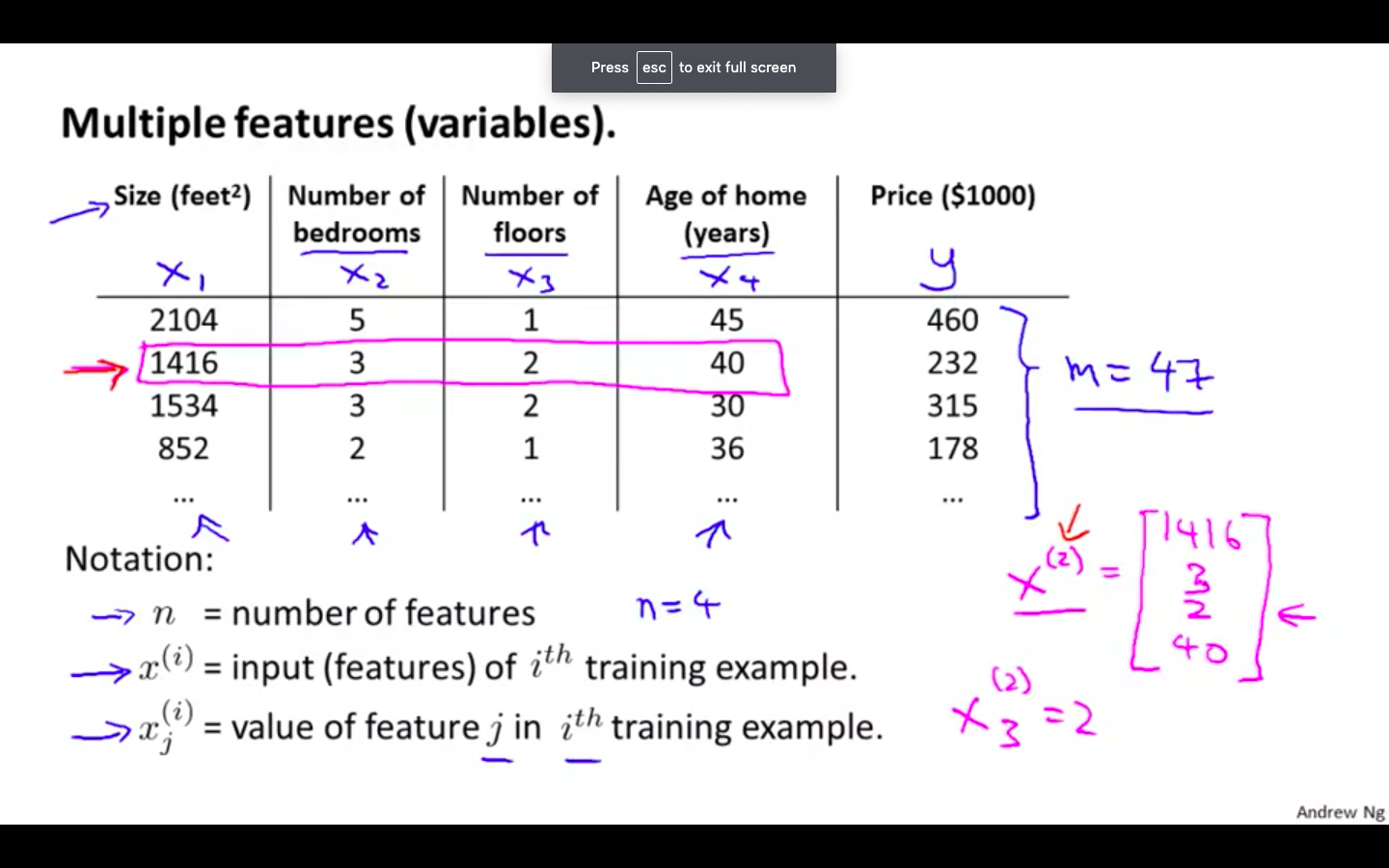
-
Hypothesis
- Number of parameters with their effect on the price of the house
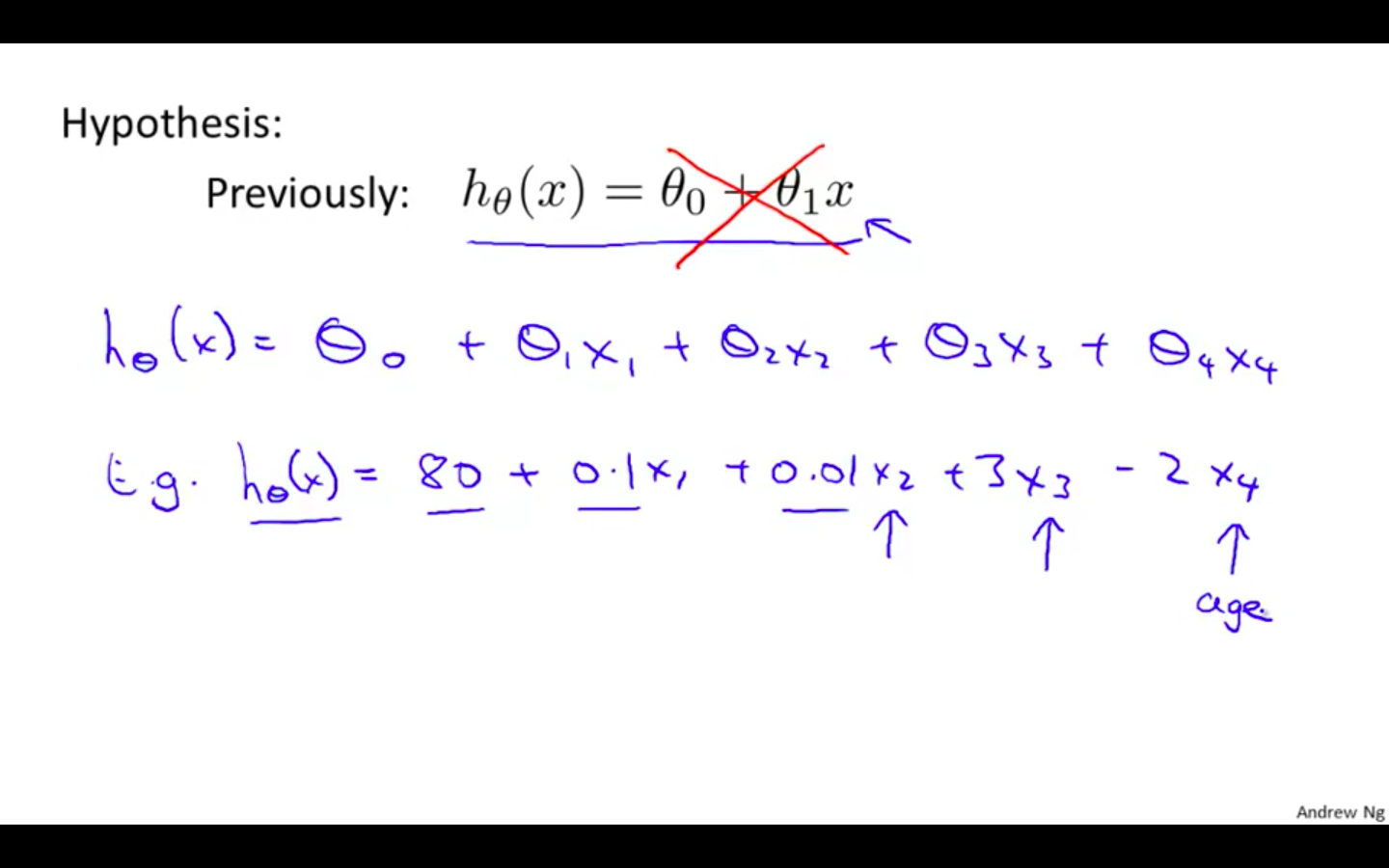
-
Taking x-zero as 1 for the convenience of notation
-
This is called as the Multivariate Linear Regression.
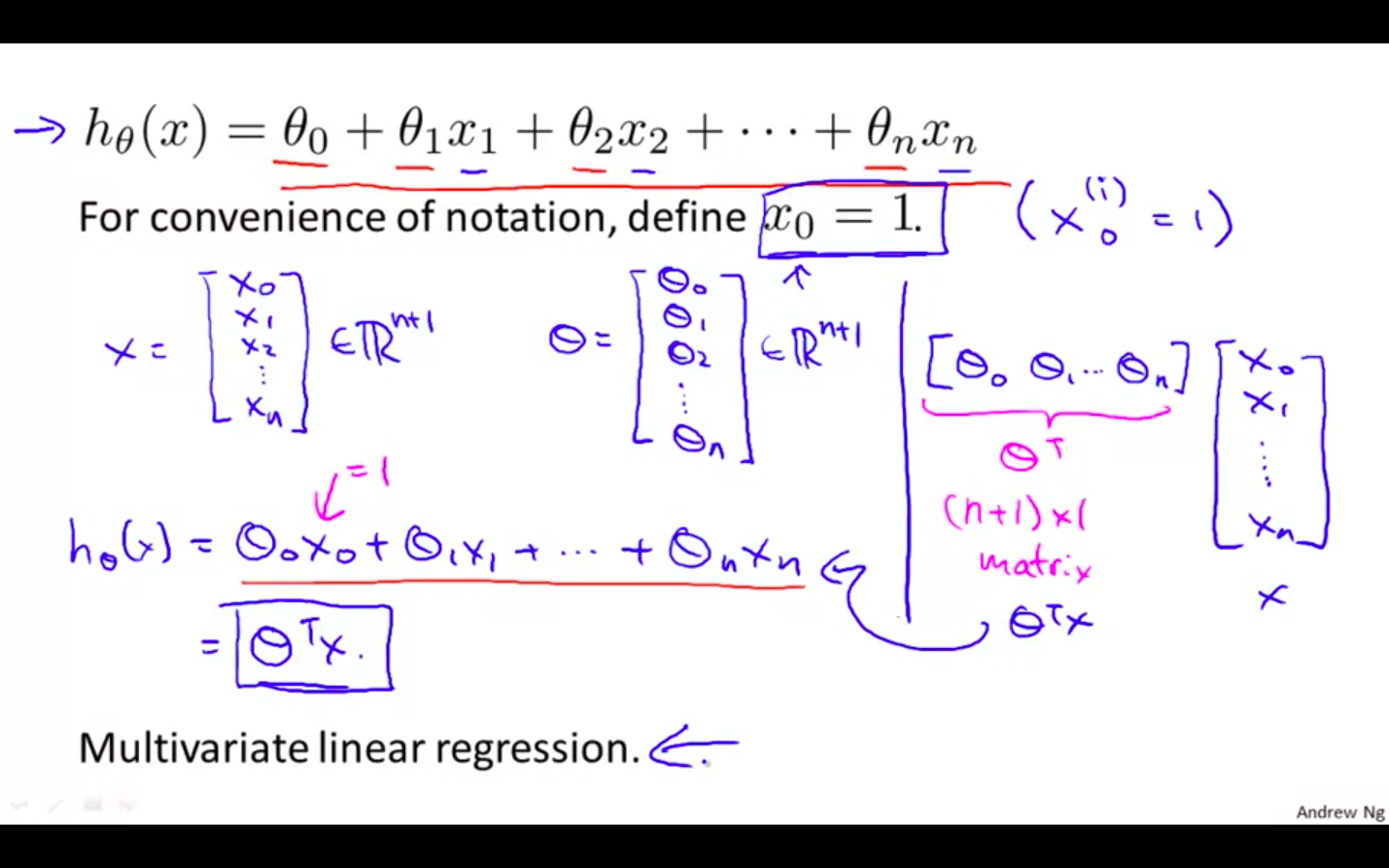
Gradient Descent for Multiple Variables
-
Concept
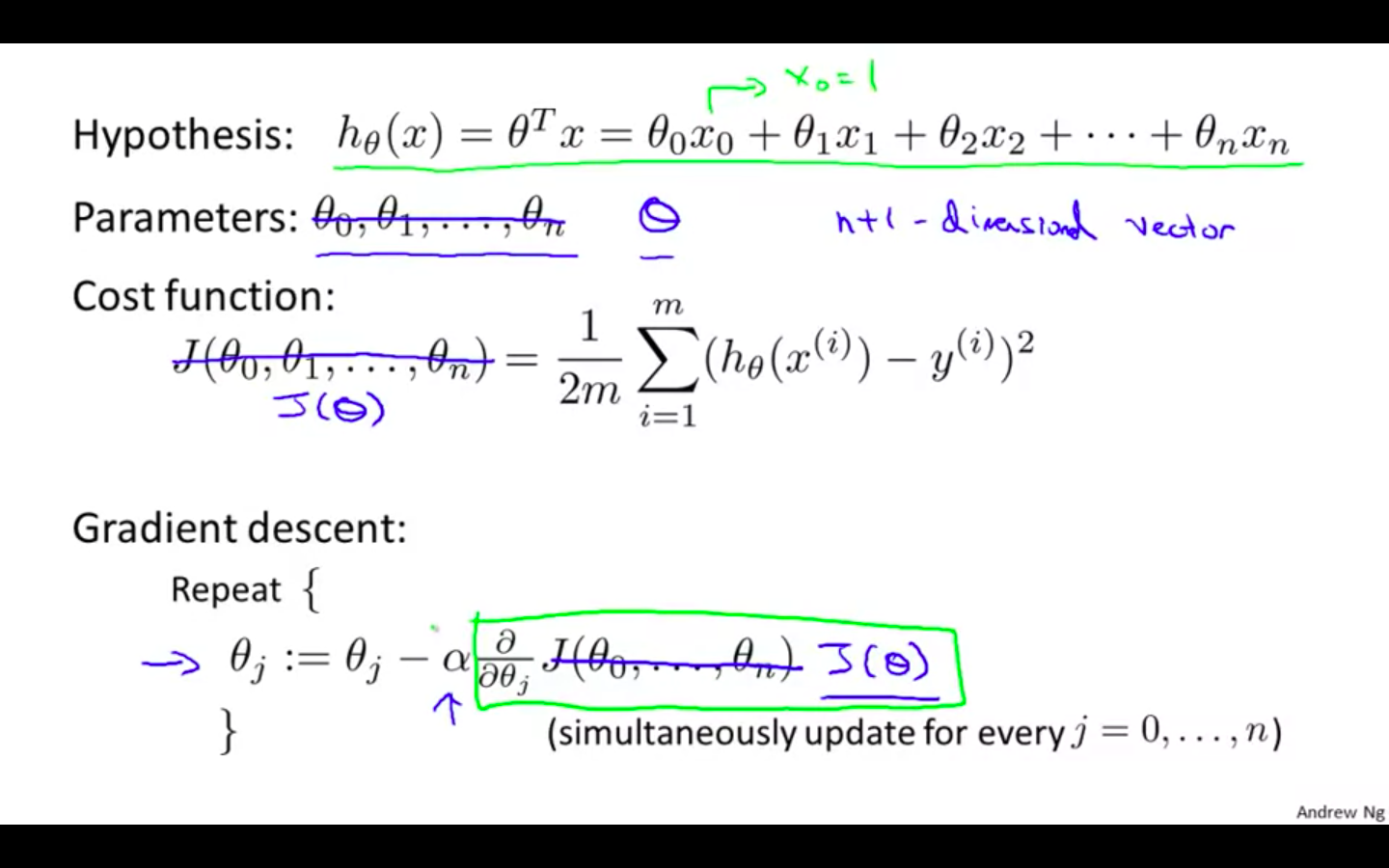
-
Comparison between Gradient Descent with one variable and Gradient Descent with multiple variable
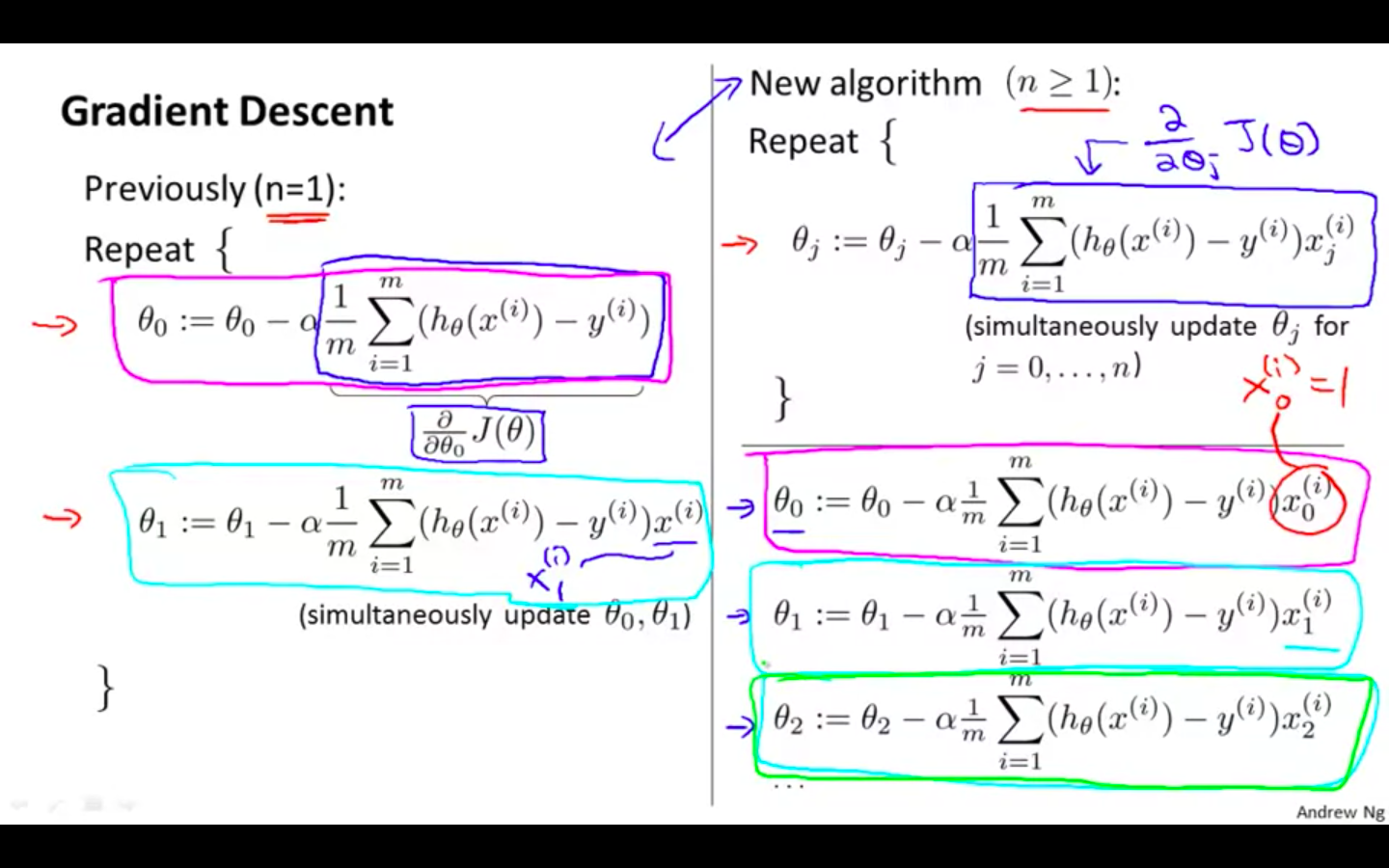
Gradient Descent In Practice I - Feature Scaling
-
Features Scaling
-
Idea: Make sure features are on a similar scale
-
This is because θ will descend quickly on small ranges and slowly on large ranges, and so will oscillate inefficiently down to the optimum when the variables are very uneven.
-
If they are not on a similar scalar then the contours will be very elliptical
- Gradient Descent will take more iteration to converge. i.e more time and power
-
If the features are on the similar scale, contours would be spaced and gradient descent would take less iteration to converge
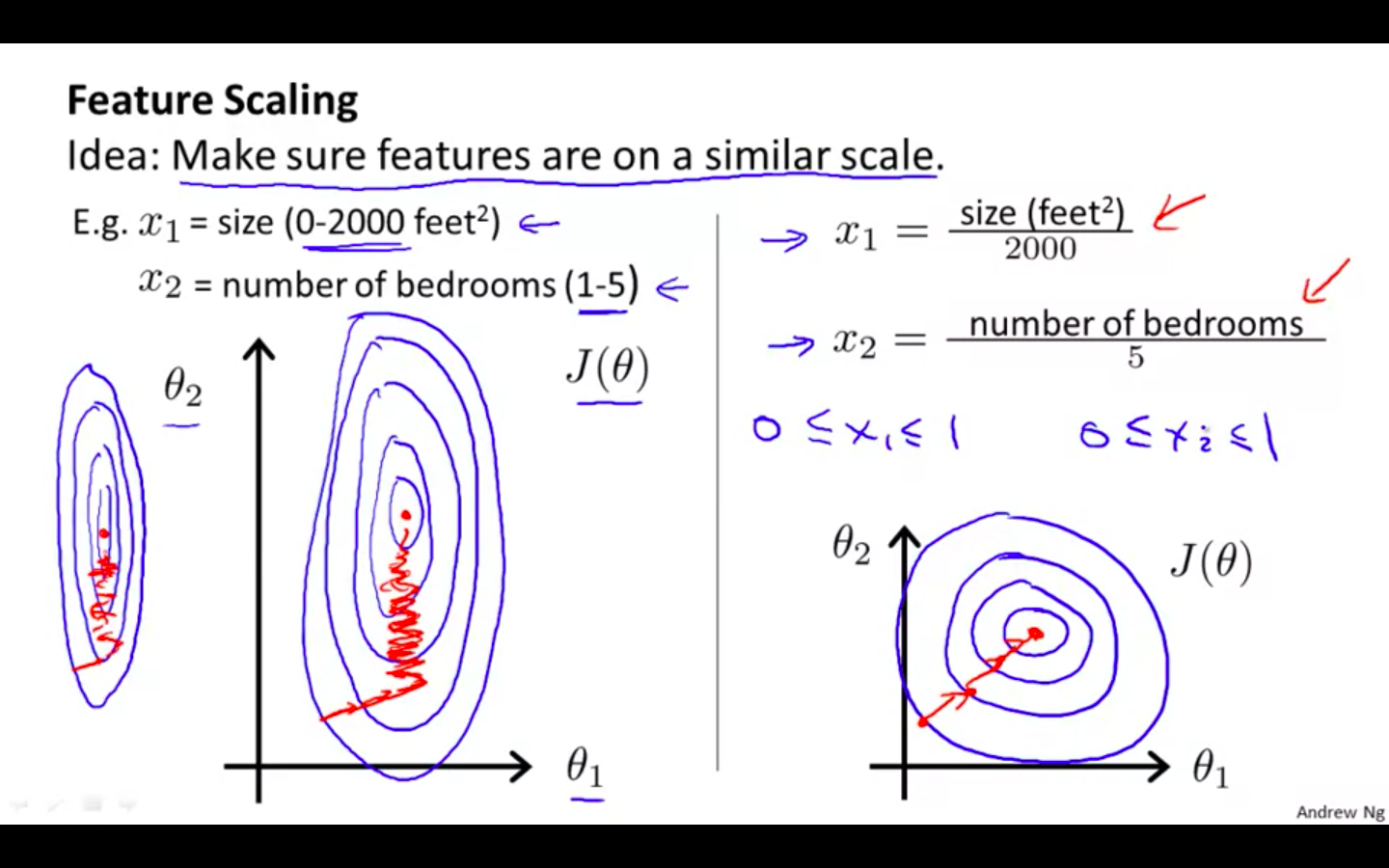
-
Feature should range between -1 ≤ x ≤ 1
-
+3, -3 = max
-
1/3, -1/3 = min
-
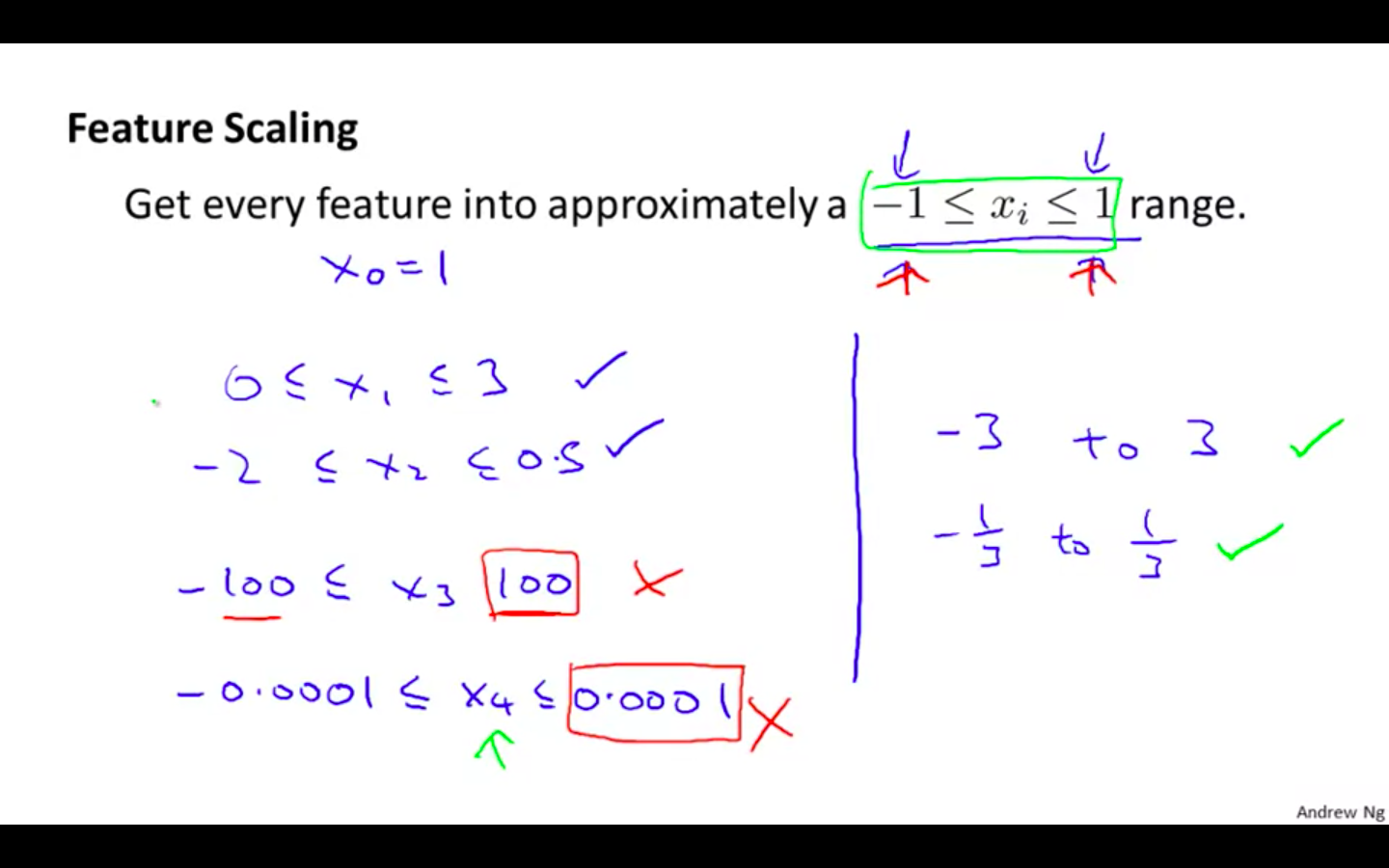
-
-
Mean Normalisation
-
Replace x with x - average value in the training set
-
Do not apply to x-zero = 1
-
This results in approximately zero mean.
-
x = x - average value on training set / s - range ( max - min )
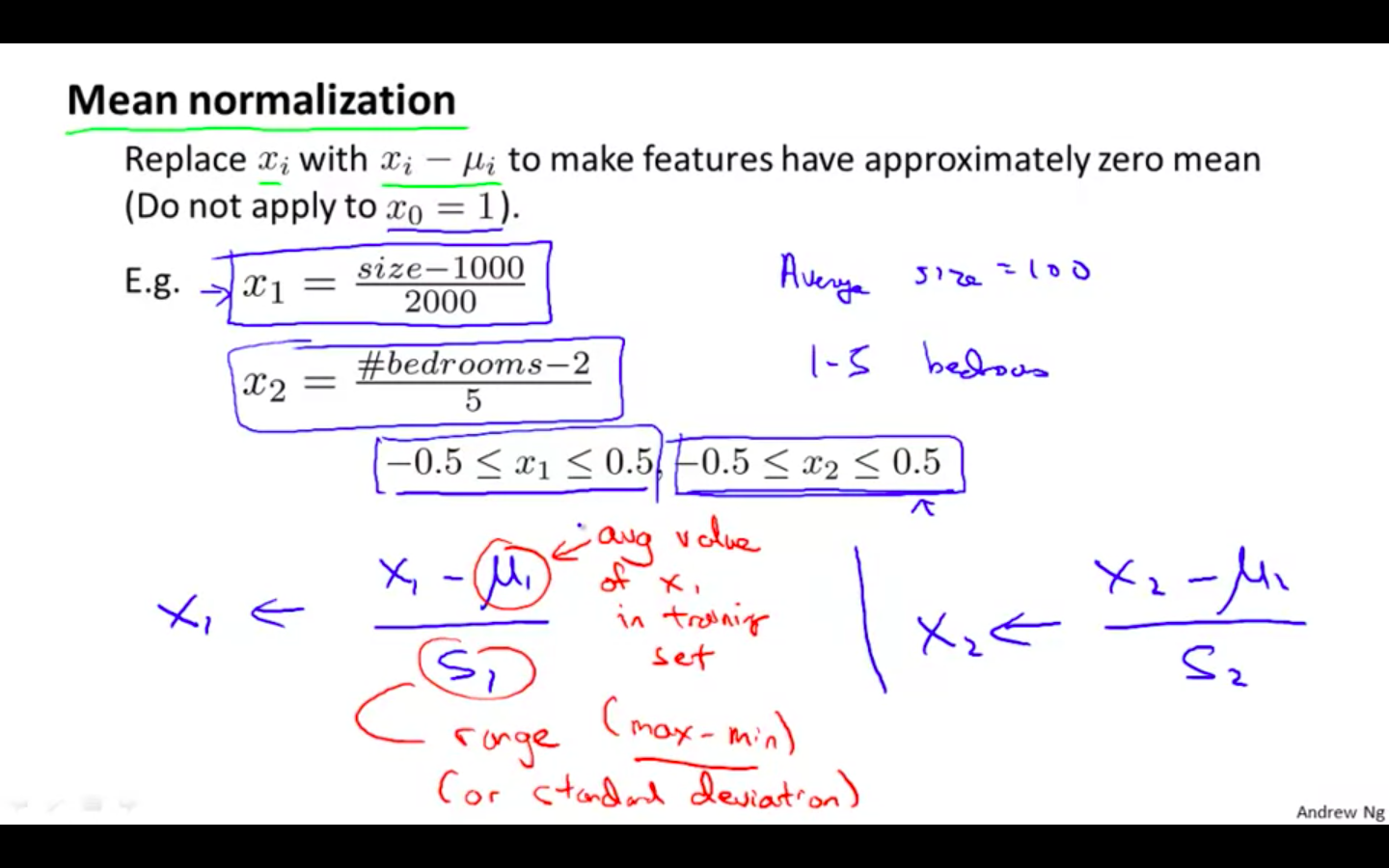
-
Gradient Descent In Practice II - Learning Rate
-
“Debugging”: How to make sure gradient descent is working correctly
-
Plot the graph, on x-axis is the iteration and on y-axis value of cost function
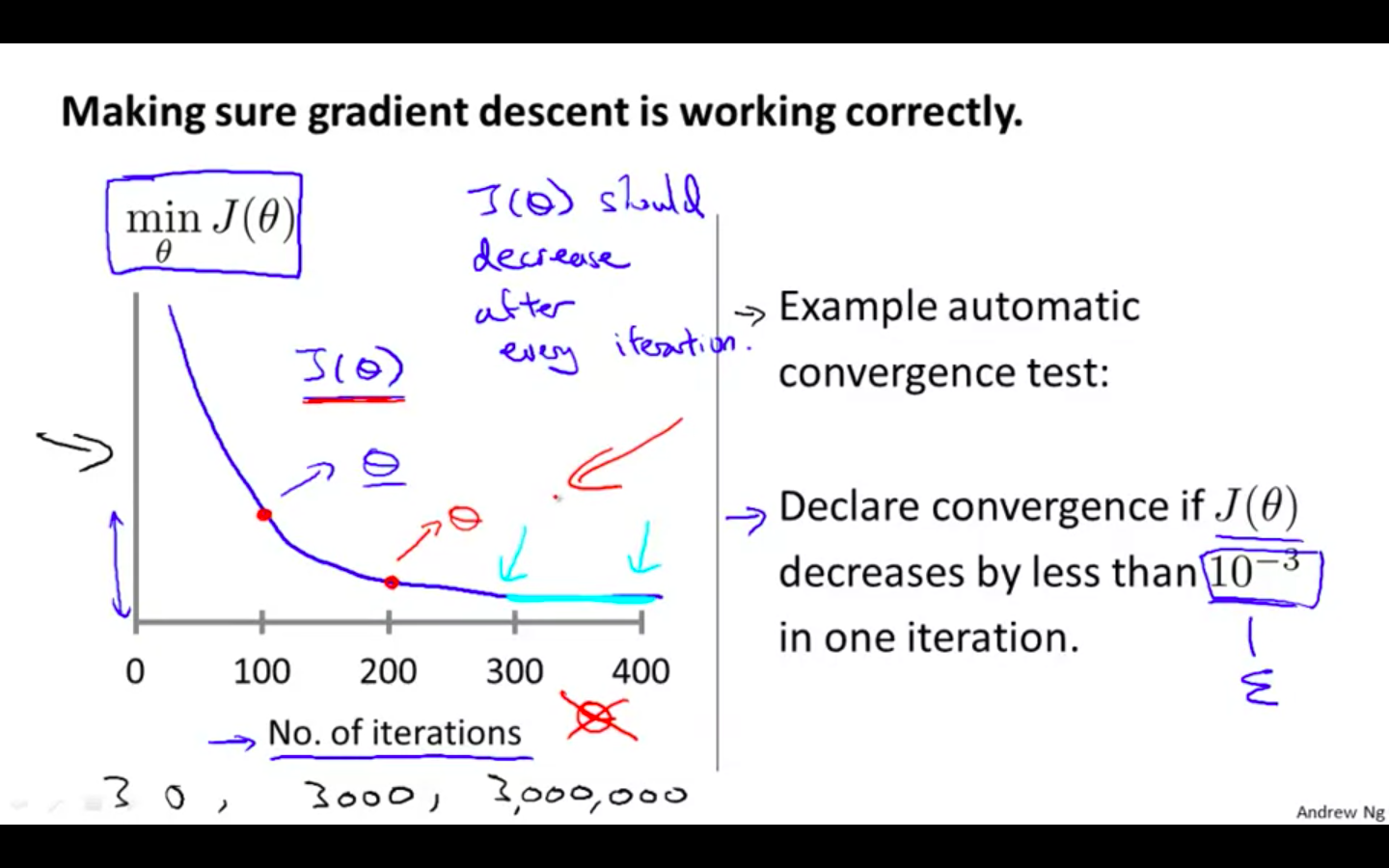
-
Automatic convergence test can be implemented
- Declare convergence if J(θ) decreases by less than E in one iteration, where E is some small value such as 10^-3
-
-
How to choose learning rate alpha
- It has been proven that if learning rate α is sufficiently small, then J(θ) will decrease on every iteration.

-
Summary
-
Try with some range of values
-
alpha is too small : slow convergence
-
alpha is too large : may not decrease on every iteration, may not even converge
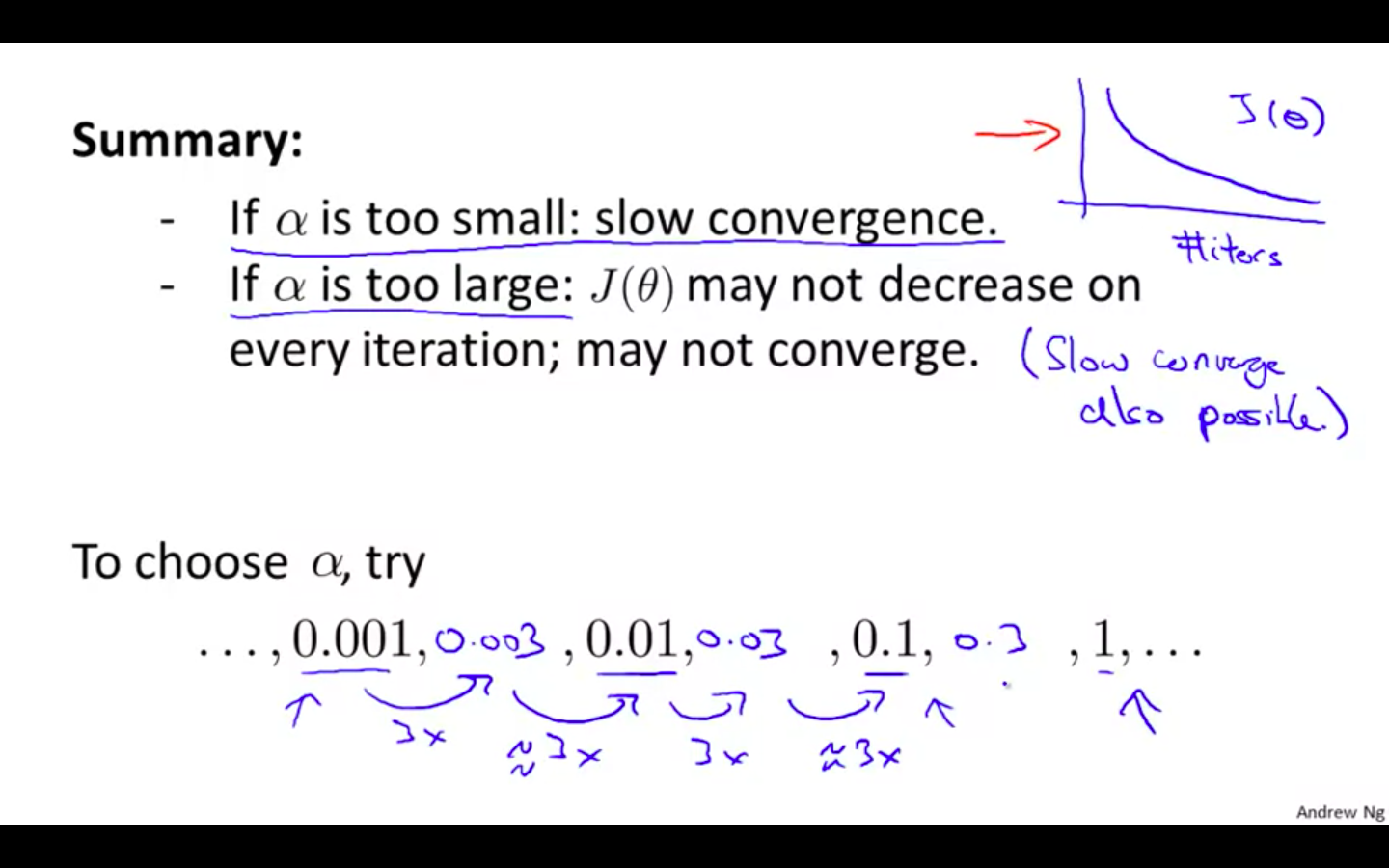
-
Features and Polynomial Regression
-
We can improve our features and the form of our hypothesis function in a couple different ways.
-
We can combine multiple features into one. For example, we can combine x-1 and x-2 into a new feature x-3 by taking x-1 * x-2.
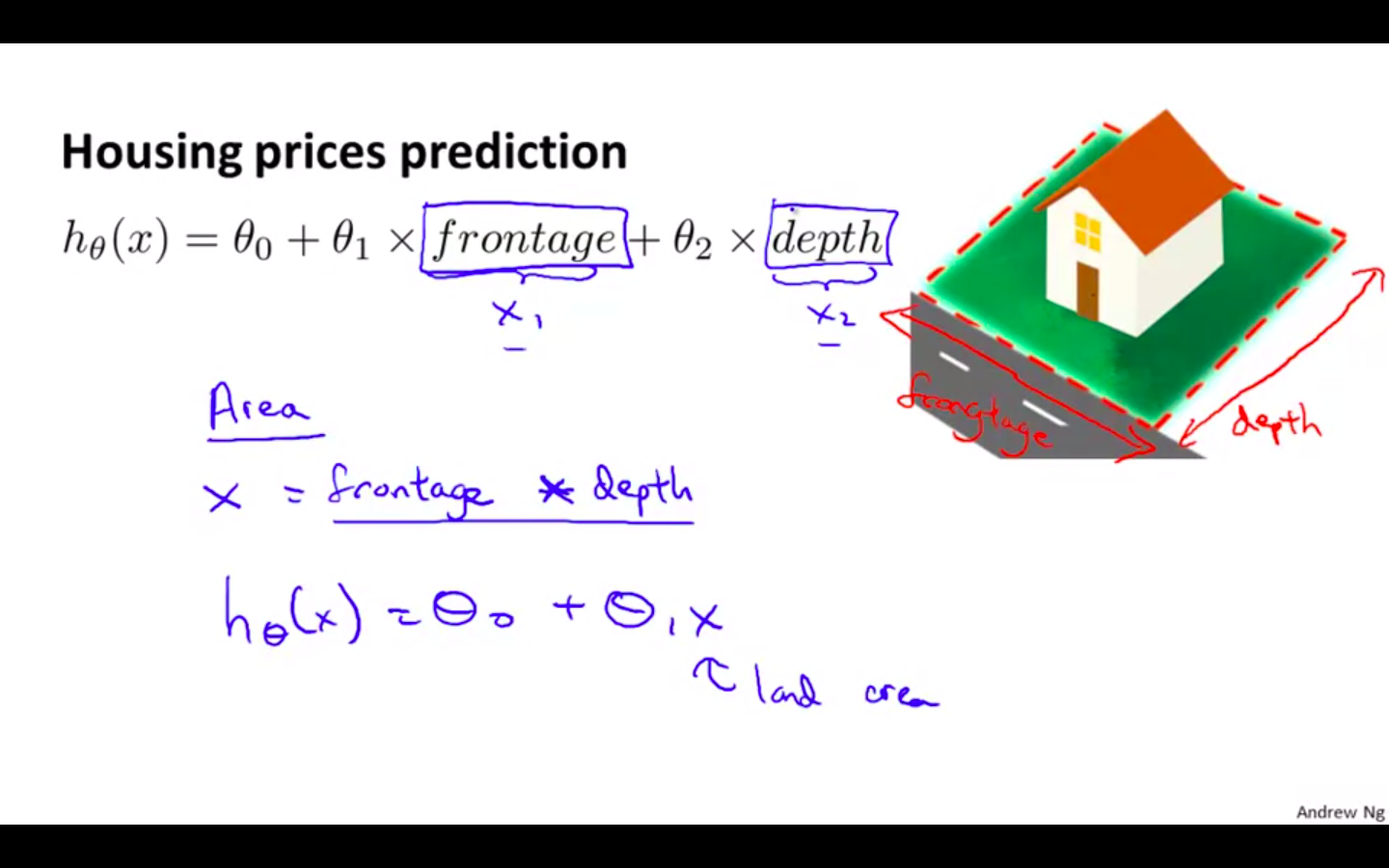
-
Polynomial Regression
-
Our hypothesis function need not be linear (a straight line) if that does not fit the data well.
-
We can change the behaviour or curve of our hypothesis function by making it a quadratic, cubic or square root function (or any other form).
-
Quadratic function comes down eventually which is not applicable in this example. Prices can’t go down with increase in size of the house.
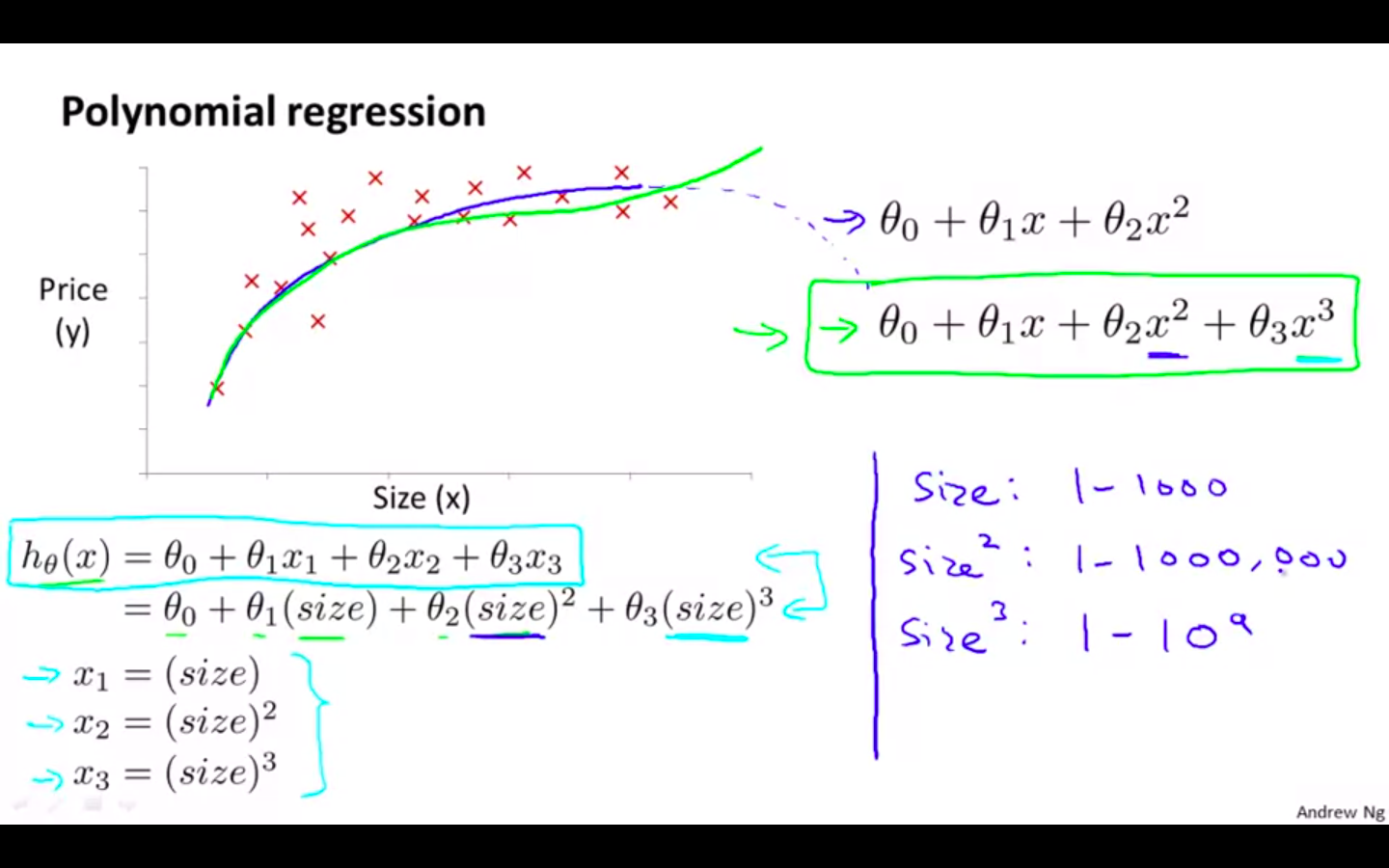
-
-
Choice Of Features
- One important thing to keep in mind is, if you choose your features this way then feature scaling becomes very important.
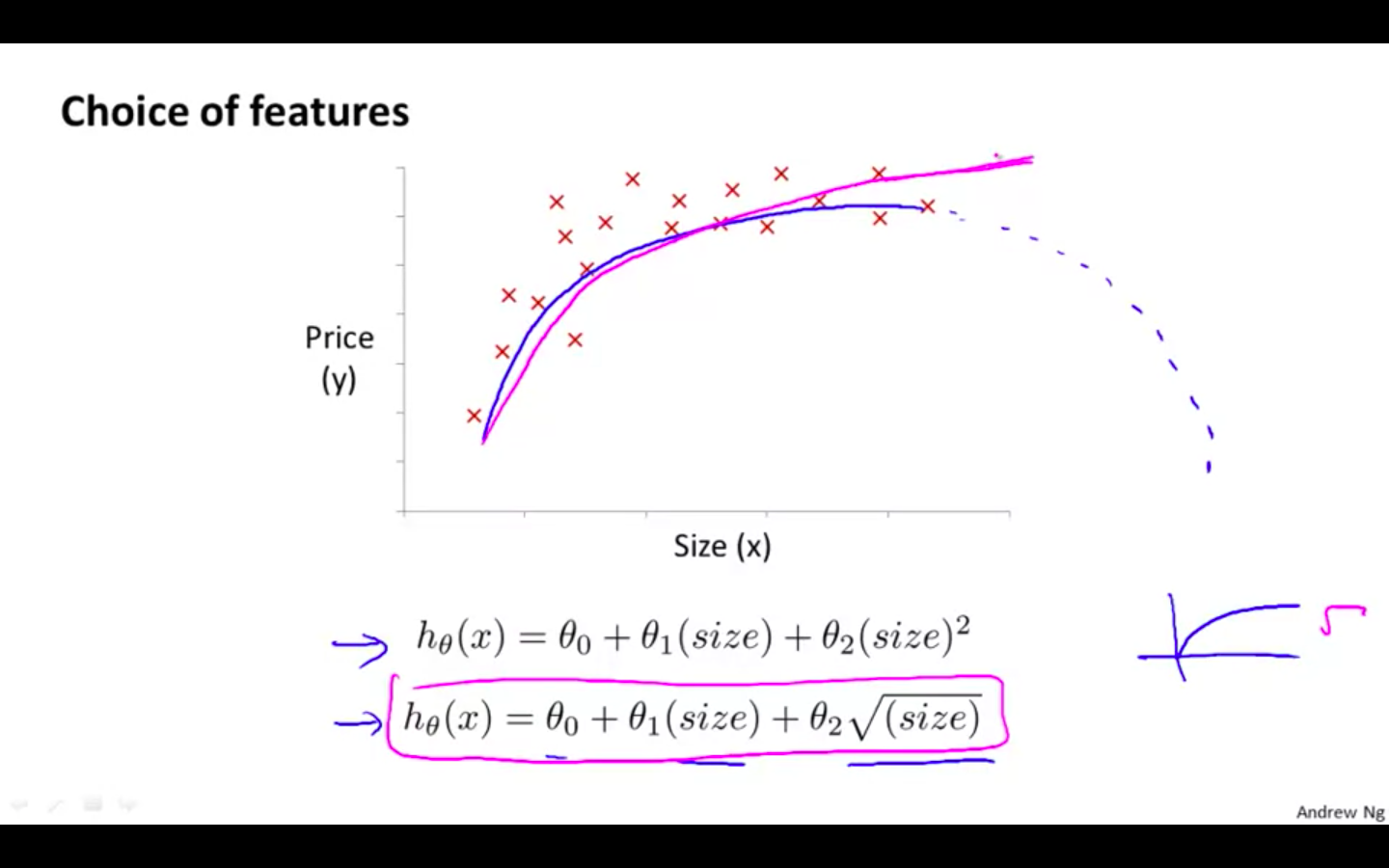
Computing Parameters Analytically
Normal Equation
-
“Normal Equation” method, we will minimise J by explicitly taking its derivatives with respect to the θj ’s, and setting them to zero.
-
This allows us to find the optimum theta without iteration.
-
Intuition
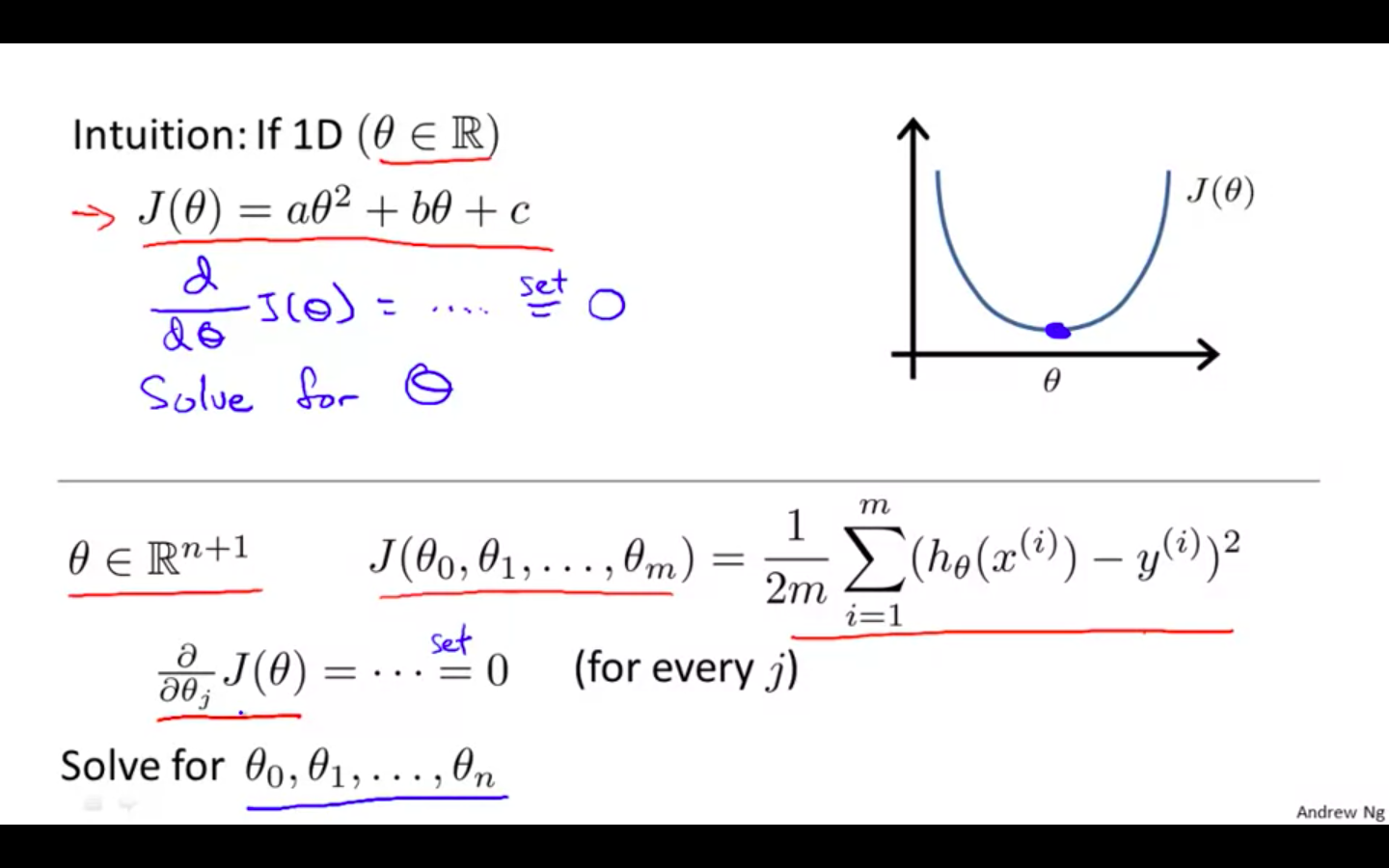
-
Example
-
X - features matrix
-
y - output matrix

-
m examples, n features
-
X - also called as design matrix
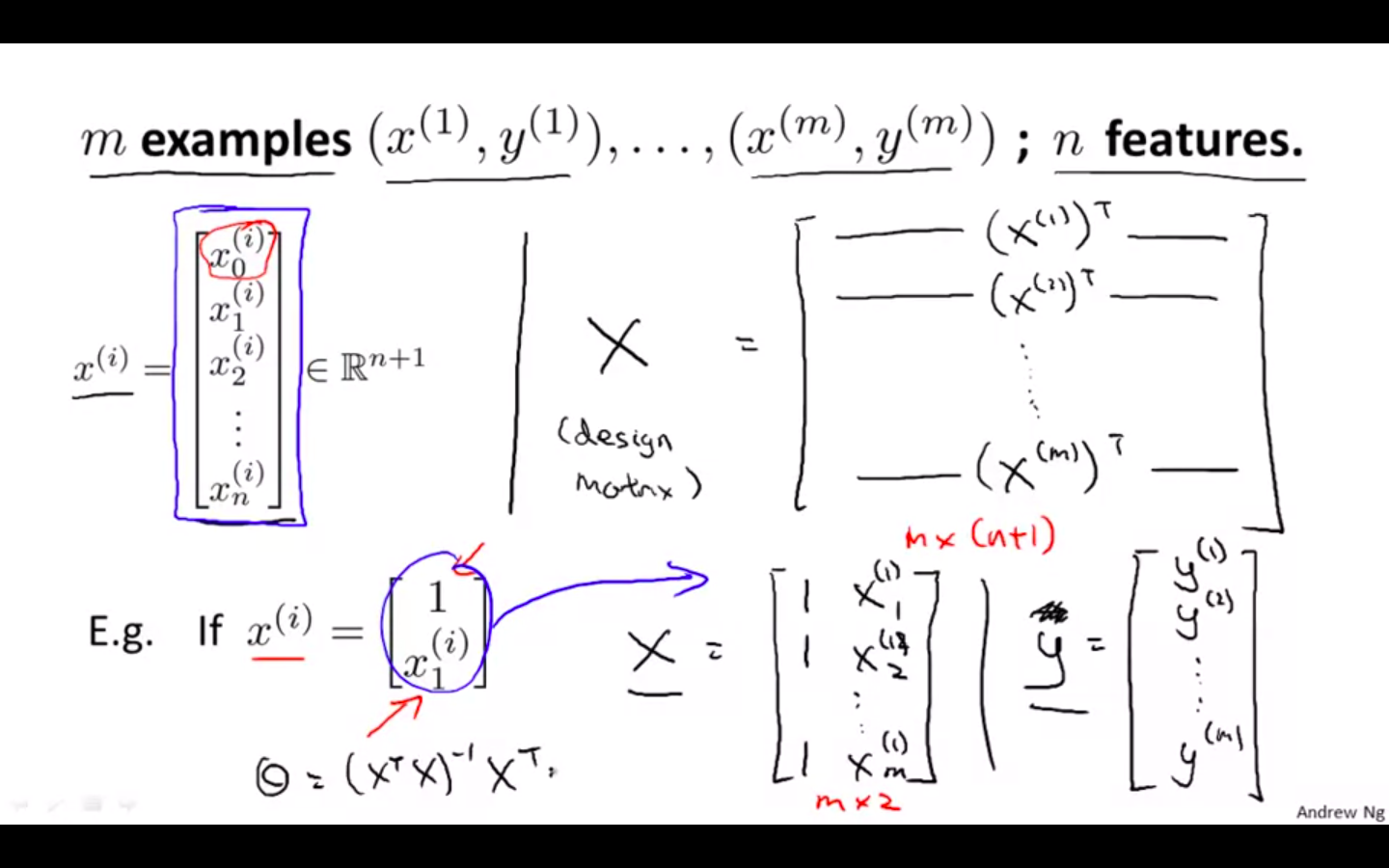
-
Feature Scaling is not needed while using normal equation method
-
Normal Equation Octave Representation
-
pinv( X' * X ) * X' * y
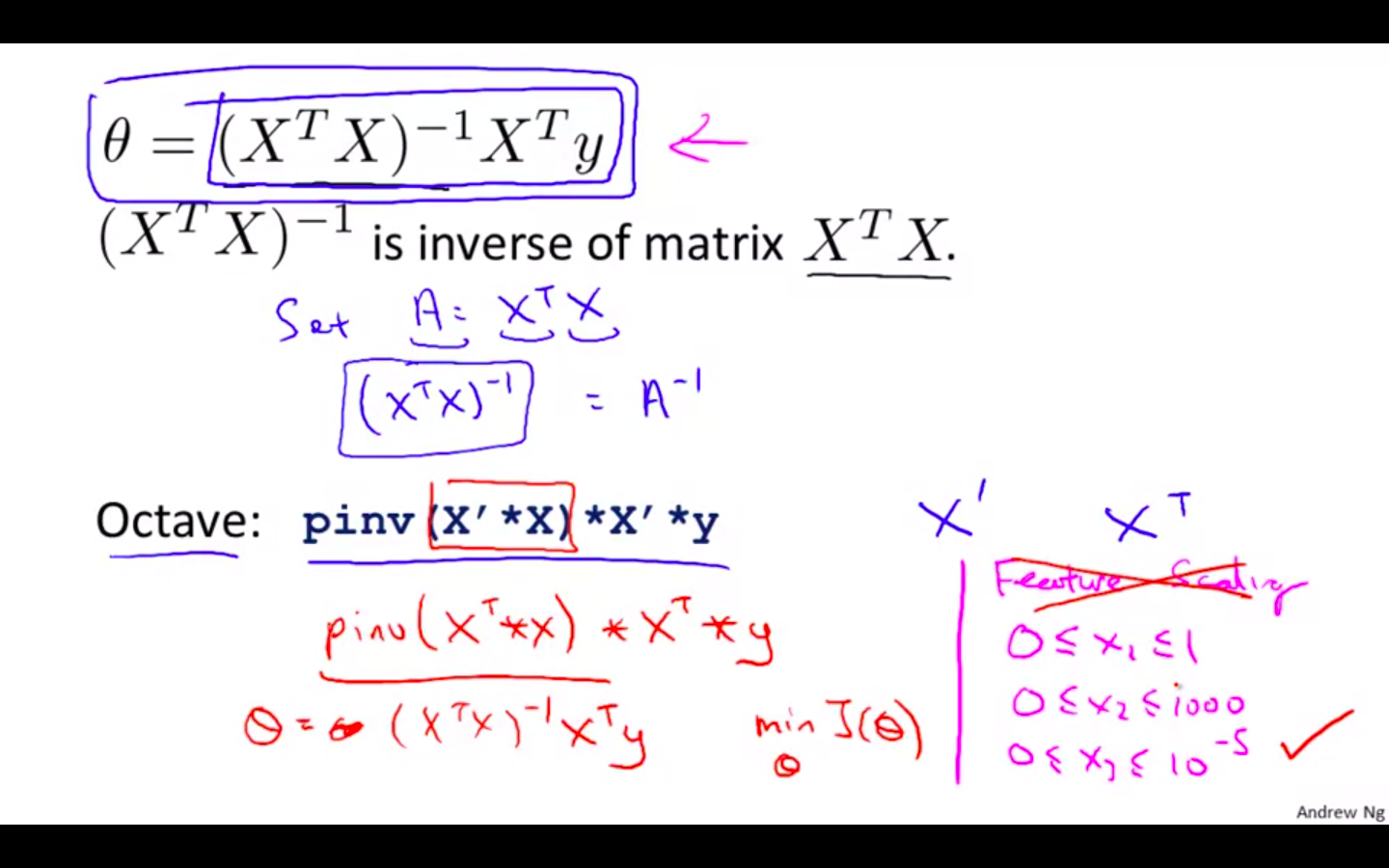
-
Comparison Between Gradient Descent & Normal Equation
-
n = Normal Equation Gradient Descent
-
For some algorithms, normal equation method doesn’t work
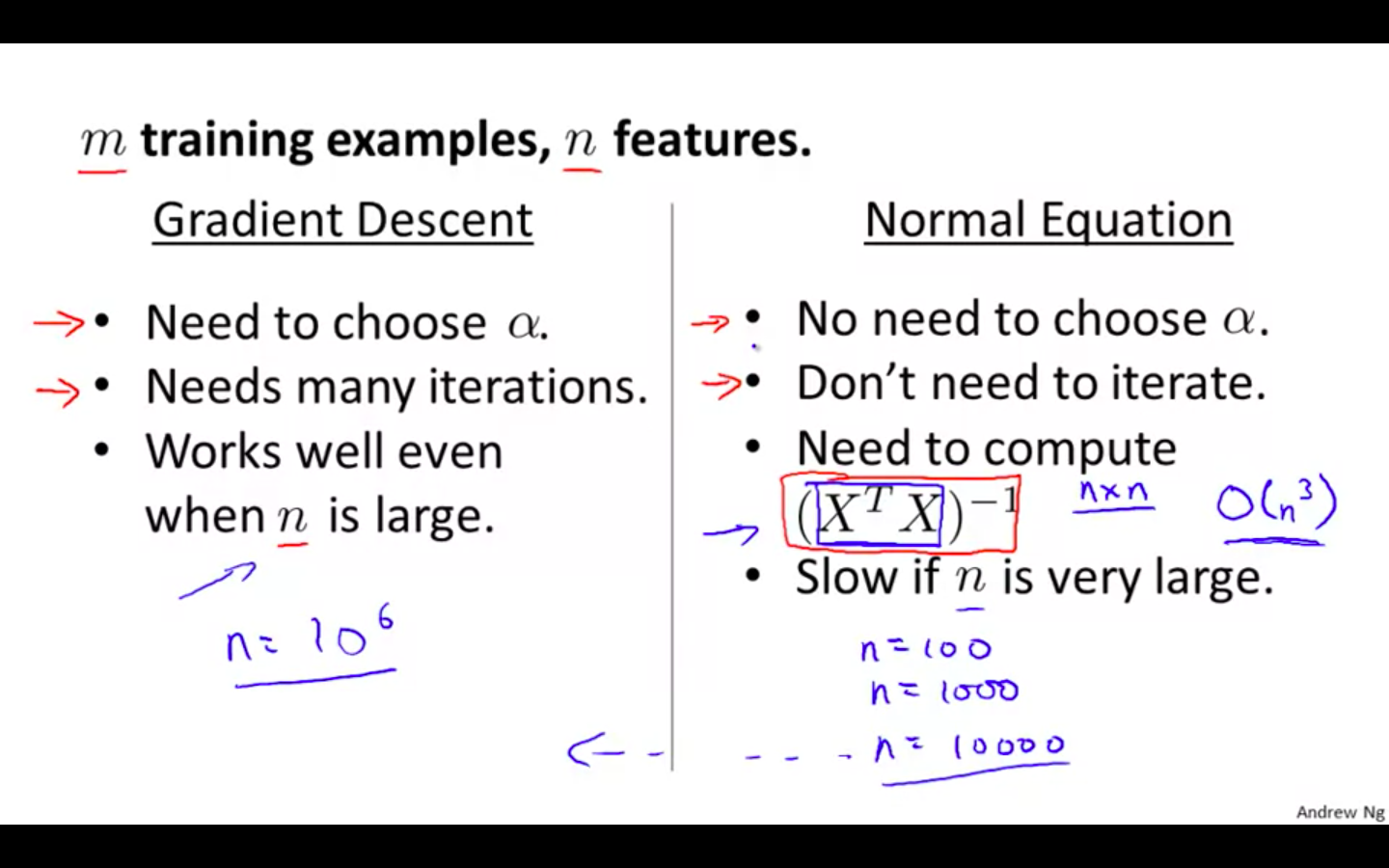
-
Normal Equation Noninvertibility
-
When implementing the normal equation in octave we want to use the ‘pinv’ function rather than ‘inv.’ The ‘pinv’ function will give you a value of θ even if X^T * X is not invertible.
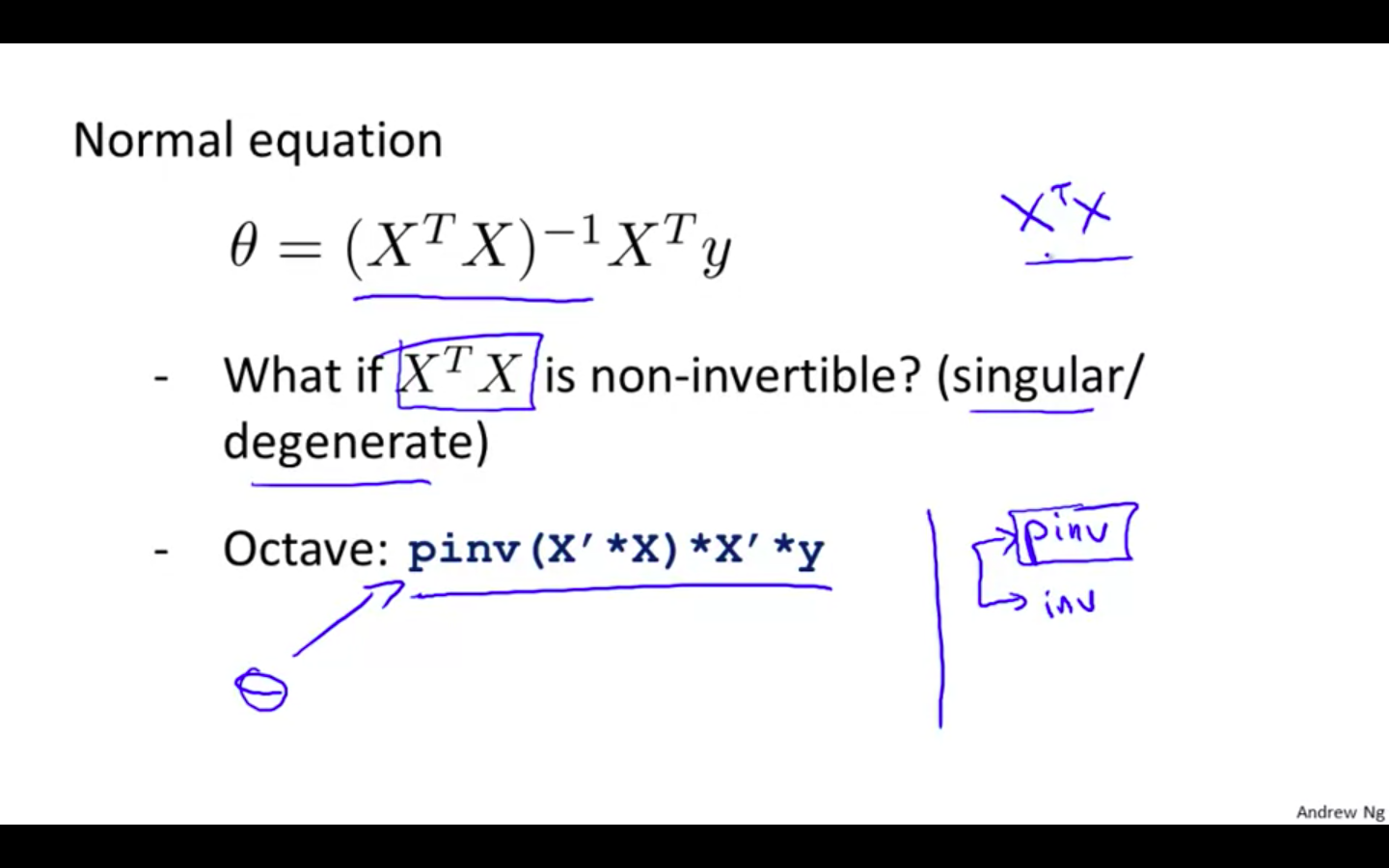
-
Reasons for Noninvertibility
-
Redundant features, where two features are very closely related (i.e. they are linearly dependent)
-
Too many features (e.g. m ≤ n). In this case, delete some features or use “regularisation”.
-
-
Solution
- deleting a feature that is linearly dependent with another or deleting one or more features when there are too many features.
